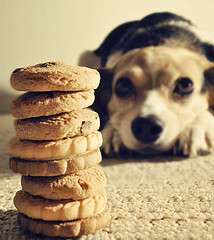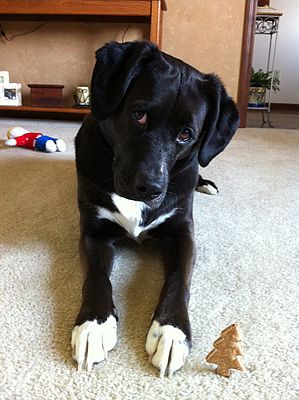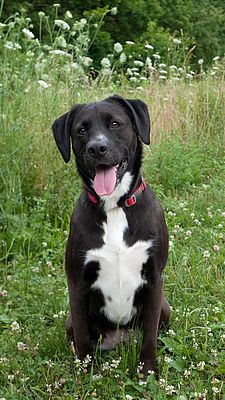 There are good reasons to get a dog and bad reasons to get a dog, but there’s nothing worse than having to find a new home for your dog after you’ve become attached to it because you made a hasty decision. Luckily, you can avoid the heartache by taking your time and considering the suggestions below before adding a new canine member to your family.
There are good reasons to get a dog and bad reasons to get a dog, but there’s nothing worse than having to find a new home for your dog after you’ve become attached to it because you made a hasty decision. Luckily, you can avoid the heartache by taking your time and considering the suggestions below before adding a new canine member to your family.
People who need service dogs or working dogs to perform tasks already have a good reason to get a dog, but for most of us, our dogs will be family pets. Before thinking about what kind of dog you would like, it’s important to understand and accept the level of commitment you’ll be making when bringing a new dog into your home. The average lifespan of a dog is around 12 years with smaller dogs often living longer. You’ll need to have a good amount of time and energy to spend with the dog along with enough space and money to properly care for its needs. So, if you’re ready for that commitment, what are some good reasons to get a dog?
5 Good Reasons to Get a Dog
1. Companionship
Dogs are loyal companions that enjoy spending time with you. You’ll never feel lonely or isolated when you have a dog. They’re thrilled to be invited along if you’re heading out the door or happy to greet you when you return home. While spending time around the house, they’re content to hang out with you and may even listen to you talk about your day, without judging, of course. As social pets, they do require you to spend time with them (taking walks, playing, training, etc.) and they will reward you with their true friendship and unconditional love. Bonus: You’ll never have to eat alone!
2. Better Health
There are several health benefits to owning a dog. They can lower stress and blood pressure levels and help relieve depression. Petting or playing with a dog can increase serotonin and dopamine levels which also helps you to relax. Because dogs bring more structure and purpose to our lives, we feel needed and can more easily forget about our problems. Dogs can even enhance our social lives as we meet new people when we’re out with our dogs. There’s no wonder there are so many therapy dogs lending a paw to patients in hospitals and nursing homes.
3. Exercise Buddy
Dogs need exercise to stay fit and healthy and those long walks and play sessions in the park with your best friend will help keep you healthier too. Exercising alone can be boring but with so many fun activities you can share with your dog, you and your workout partner will both keep moving and stay fit. Your new live-in fitness coach will motivate you by reminding you when it’s time for your daily walk together.
4. Joy
Dogs deliver an enormous amount of fun and laughter with their contagious zest for life. They play with you, entertain you with their crazy antics and bring families closer together. Nothing is better at turning around a bad mood than watching a playful puppy or goofy dog having fun and living in the moment. If you ever need a little TLC, a dog will curl up beside you and give you a kiss or gently wipe away those tears. There’s no doubt about it, dogs make our lives more joyful.
5. Home Security
One of the best deterrents against home burglaries is a barking dog. Most dogs will be happy to alert you if anything unusual is happening around the home and a barking dog will normally cause a thief to move on to an easier target. If your dog rarely barks, keeping a large dog bowl outside your back door can still be a great defense against burglaries.
If you happen to be wondering about bad reasons to get a dog, here are a few.
5 Bad Reasons to Get a Dog
1. The Adorable Face
It’s happened to all of us. You know, that phenomenon when you see a cute puppy with an adorable face and those
“please take me home” eyes and your mind races to figure out how you would manage all those details of caring for the dog. Take a deep breath and resist the urge to assume everything will work out somehow. Caring for a dog is a huge responsibility. Give yourself enough time to think through the decision before you head home with a new puppy and you’ll avoid having any regrets later.
2. Protection
Having a threatening dog chained in the yard with little or no socialization or training is never a good idea. You may feel safer, but it may be an accident waiting to happen and someone could be injured if the dog accidentally gets loose. Dogs needs attention, socialization and proper training and are more content as social, well-adjusted family members rather than lone security guards patrolling the yard.
3. Fashion Accessory
I have to admit, there are some cute little dogs being toted around in purses these days wearing the latest in doggie fashion. There’s nothing wrong with that as long as having a small fashionable dog is not your only motivation for becoming a dog owner. It may seem like little dogs require less work and energy because of their size, but they have the same needs as bigger dogs.
4. Begging Children
Dogs can help kids learn about compassion and teach responsibility, but you can’t expect a child to assume complete responsibility of caring for a dog no matter how much they promise or beg. If all family members are on-board with the decision to get a dog and are involved in caring for the dog, everyone benefits. Yes, no matter how reliable or responsible your child is, you’ll occasionally find yourself out walking the dog (and probably enjoying it).
5. Companion for an Existing Dog
Having more than one dog can help reduce issues with separation anxiety, boredom and loneliness, but getting a second dog because you don’t have the time to spend with the dog you already have can introduce more problems. Make sure you have the time and energy to give each dog the individual attention they deserve and that all the dogs get along well with each other.
Having a good reason to get a dog and being able to meet your new dog’s needs will start you off on the right foot in creating an amazing relationship with your new best friend. Good luck with your decision and share your experience of why you decided to get a dog and if it turned out to be a good decision.


 There are good reasons to get a dog and bad reasons to get a dog, but there’s nothing worse than having to find a new home for your dog after you’ve become attached to it because you made a hasty decision. Luckily, you can avoid the heartache by taking your time and considering the suggestions below before adding a new canine member to your family.
There are good reasons to get a dog and bad reasons to get a dog, but there’s nothing worse than having to find a new home for your dog after you’ve become attached to it because you made a hasty decision. Luckily, you can avoid the heartache by taking your time and considering the suggestions below before adding a new canine member to your family.
 Practice several times each day in short sessions, giving him lots of praise when he’s successful. As your dog catches on, start giving the command with the treat further away from his nose. Eventually your dog will understand the verbal command without using treats, but occasionally reward him for sitting because he’s such a good boy!
Practice several times each day in short sessions, giving him lots of praise when he’s successful. As your dog catches on, start giving the command with the treat further away from his nose. Eventually your dog will understand the verbal command without using treats, but occasionally reward him for sitting because he’s such a good boy!